The Appian Way is often referred to as the “Queen of Roads” due to its grandeur, historical significance, and impressive infrastructure engineering by the ancient Romans.
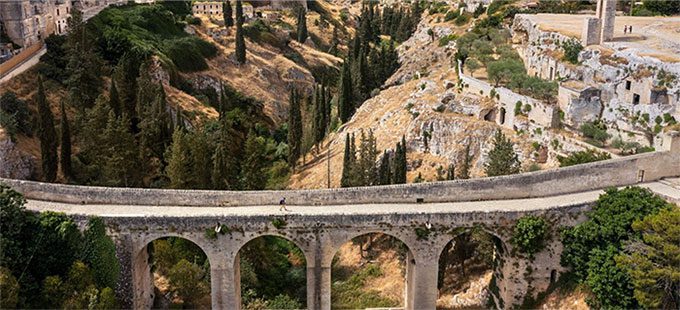
A small section of the Appian Way, where tombs below can be clearly seen. (Photo: National Geographic).
Ancient Romans were renowned for their groundbreaking constructions that enhanced urban conveniences, such as aqueducts and bridges spanning rivers. Among these, the stone-paved roads stand out.
One of the first and most significant roads built by the Romans is the Appian Way. This is considered a symbol of Roman ingenuity of the time and was the first paved road in the Roman Empire. It also set the standard for future road construction.
The road served as a vital artery for the movement of troops, supplies, and trade caravans, connecting Rome with the southern regions. Besides its military and strategic significance, the Appian Way played a crucial role in commercial connectivity, contributing to the economic growth and prosperity of the Roman Empire.
The Appian Way also had political propaganda significance during Roman times. The road was adorned with monuments, tombs, and milestones that represented symbols of power and Roman cultural identity. The construction of grand architectural works along the Appian Way showcased the wealth and magnificence of Rome, reinforcing the city’s political and cultural dominance.
The Construction of the “Queen of Roads”
This road was initiated by Appius Claudius Caecus, a Roman censor, in 312 BC.
The Appian Way was not the first road in Italy, but it was the first paved road, marking the beginning of an increasingly developed network of roads later on. Earlier, the Etruscans had built the first roads in Italy, but they were not as durable or well-constructed as those built by the Romans.
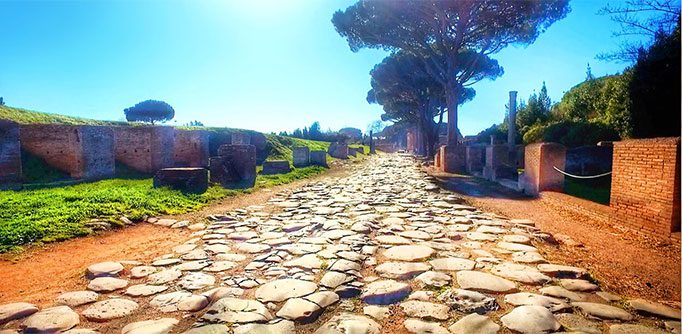
The Appian Way is the first paved road in Italy. (Photo: Romecabs).
Construction techniques were a key factor in the success of the Appian Way. The road was designed with several unique architectural features.
The Appian Way has an average width of 6 meters and is slightly arched in the middle to allow water to flow and collect in the gutters running along both sides. The roadbed consists of heavy stone blocks bonded with lime mortar. On top of this, tightly fitted stones were laid to create a flat surface. These stones fit together so well that the historian Procopius exclaimed that the stones were assembled so skillfully that it appeared natural rather than intentionally arranged.
On either side of the road are a number of monuments, tombs, and important milestones such as honorific columns, dedication plaques, and boundary stones. The honorific columns were erected to commemorate significant events or achievements, often honoring emperors or military victories. The dedication plaques expressed gratitude or devotion to gods or influential figures. The boundary stones marked the boundaries of private properties, delineating ownership along the road.
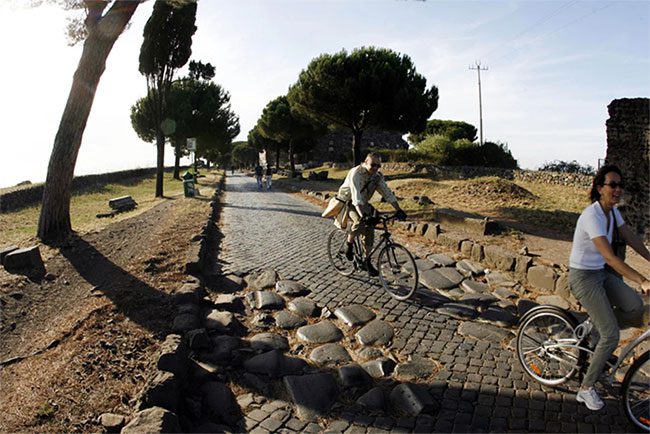
A cyclist rides along the Appian Way in Rome. (Photo: NBC News).
What sets Roman roads apart is their durability and practical design. In constructing roads, the Romans followed a meticulous process. First, they dug a trench and laid a layer of compacted sand on the surface. The trench was then filled with gravel, broken bricks, and clay. Large stones were erected along the edges of the trench. A top layer was added, consisting of complex lime cement and smooth stone slabs.
The road surface was made of polygonal basalt blocks, capable of bearing the weight of legions of soldiers, heavy wagons, and chariots. The traces of wagons are still engraved on the stones, attesting to the durability of the Appian Way.
The Appian Way has been a testament to over 2,300 years of culture and history. If the stones could speak, they would reveal the darker sides of the great empire. As the main artery for the military and supplies, the Appian Way was the site of countless battles, both lost and won.
The Spartacus Revolt and the Tombs
During the Third Servile War (73-71 BC), also known as the Spartacus Revolt, the gladiator Spartacus led an army of 40,000 former slaves against the Roman Empire. After two years of fighting, Spartacus and his army were ultimately defeated. Six thousand rebels were crucified along the Appian Way, from Rome to Capua. This was considered a brutal punishment and served as a warning to other slaves.
Consequently, burying the dead within the city was prohibited. Tombs were constructed on the outskirts, and the Appian Way became a suitable location for burial.
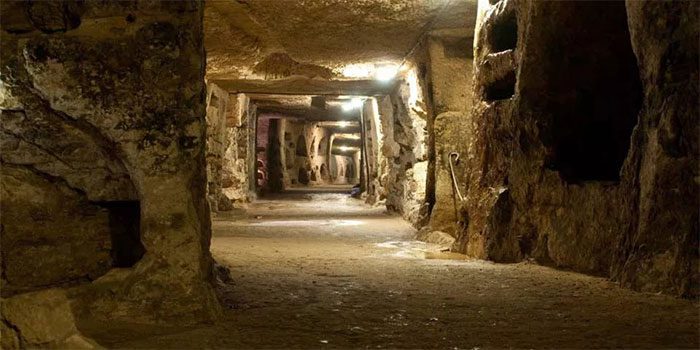
The Catacombs of St. Sebastian beneath the Appian Way. (Photo: Rome.us).
Beneath the surface of Rome lies a maze of tunnels stretching for miles and going very deep.
These Christian catacombs were the final resting place for many early Christians. Some of them were later venerated as martyrs and saints. To show deep reverence, others carved nearby niches to place their loved ones alongside these revered Christian heroes.
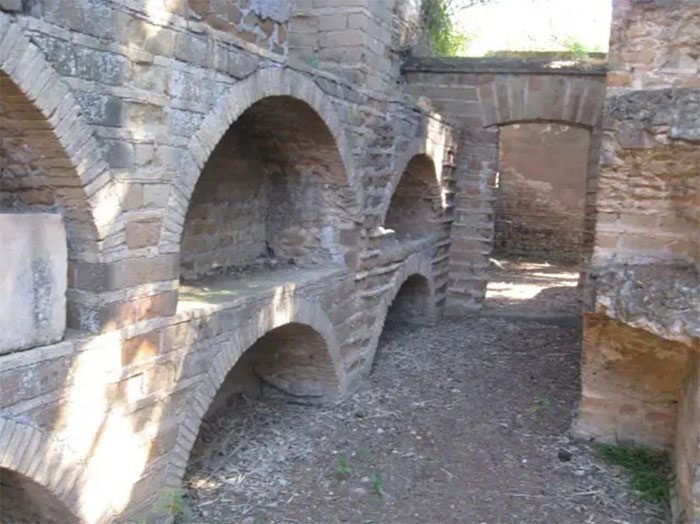
Outside the tomb of the Basilica of San Sebastian. (Photo: James King Blog).
As centuries passed, the catacombs in Rome fell into obscurity during the Middle Ages. It was only later that this series of catacombs was rediscovered.
Along the Appian Way, one can observe three distinct types of tombs.
- The first is St. Domitilla, located 16 meters underground. This catacomb is the oldest and only one to have displayed bones.
- The second catacomb is St. Callixtus, extending 20 km. This catacomb is the largest and once housed half a million bodies, including those of several popes.
- Finally, there is the catacomb of St. Sebastian, believed to be the burial place of the apostles Peter and Paul, as well as the martyr Saint Sebastian.
The Connection with Saint Peter
According to legend, the Appian Way witnessed the encounter of Saint Peter—one of the most revered figures in Christianity—and Jesus Christ.
Fleeing Rome to escape his faith, Peter met Jesus and asked him, “Domine quo vadis”, meaning “Lord, where are you going?” Jesus replied: “Venio Romam iterum crucifigi”, meaning “I go to Rome to be crucified again.” After that, Jesus vanished.
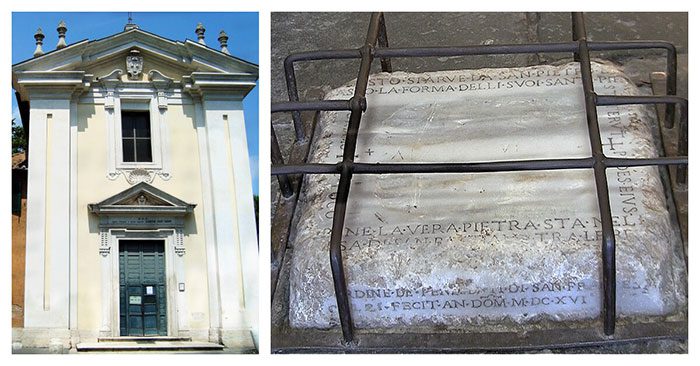
The stone bearing the footprint of Jesus. (Photo: Romecabs)
This encounter awakened Saint Peter and solidified his determination to return, steadfast in his faith. However, as a lasting testament to this event, the footprint of Jesus was left on a stone at the church of Domine Quo Vadis.
This footprint is said to be a replica, while the original is preserved at the Basilica of San Sebastiano. It serves as a tangible reminder of the encounter between Saint Peter and Jesus, inspiring contemplation and reflection on the enduring legacy of faith and sacrifice.
The Water System of the Appian Way
The water system of the Appian Way, known as Aqua Appia, is a remarkable testament to the engineering capabilities of ancient Romans. This was the first aqueduct built in Rome in 312 BC by the Roman censor Appius Claudius Caecus.
Aqua Appia played a vital role in supplying Rome with approximately 73,000 cubic meters of water daily. This significant amount of water was crucial in meeting the needs of the growing population and supporting various activities within the city.
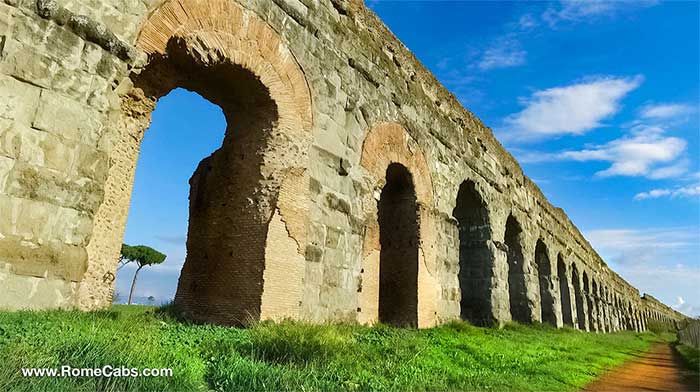
Aqua Appia flows for 16.4 km, entering the city of Rome from the east and discharging into the Forum Boarium, near Porta Trigemina and the Tiber River. (Photo: Romecabs).
The water supply system stretches approximately 16 kilometers, originating from springs on Alban Hill and leading to Rome. Most of the aqueduct’s length is underground. The remaining portion is designed to traverse through rock layers, arched tunnels, and open channels. This innovative design allows for a stable flow of water through the aqueduct, despite passing through various complex terrains.
Aqua Appia marks the beginning of Rome’s extensive network of aqueducts, setting a precedent for future engineering marvels. The construction of this water supply system demonstrated the Romans’ understanding of hydraulics as well as their ability to design and implement large-scale infrastructure projects.
Appian Way Park
The Appian Way Park, also known as Parco Regionale dell’Appia Antica, is a vast green oasis nestled along the ancient Appian Way in Rome. Spanning 13.7 square kilometers, this expansive park serves as a tranquil escape from the bustling city, inviting visitors to immerse themselves in the rich history and natural beauty of the Roman countryside.
With lush meadows, rolling hills, and towering pine trees, the picturesque landscape takes you back in time. This serene setting provides a peaceful refuge for relaxation, exploration, and reconnection with nature.
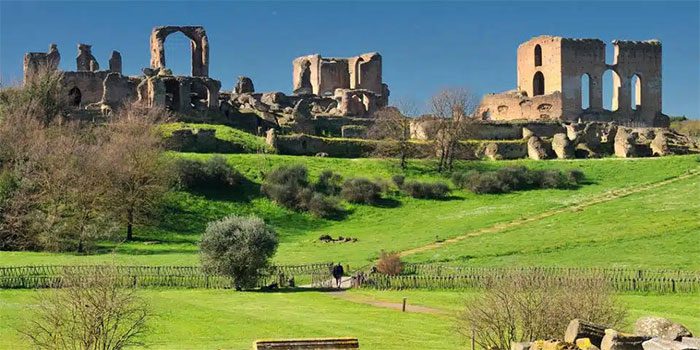
Appian Way Park in Rome. (Photo: Rome.us).
The park is home to numerous ancient Roman ruins and archaeological sites, offering a glimpse into history. The remnants of tombs, mausoleums, and villas are scattered throughout the area, showcasing the grandeur and opulence of ancient Rome.
Here, visitors can marvel at soaring arches and engineering masterpieces such as the Aqua Claudia and Marcia Aqueducts. These aqueducts stand as testaments to the ingenuity of ancient Romans and their ability to manage water supply. They are considered one of the seven wonders of ancient Rome.
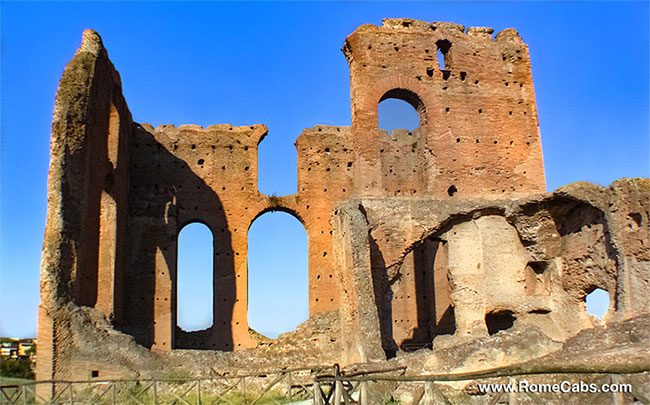
Ruins of the Quintilii Villa in Appian Way Park. (Photo: Romecabs).
Hidden within the park is the magnificent Quintilii Villa, once the luxurious residence of the Quintilii brothers, Roman nobles. Many ruins of the villa are well-preserved, including the courtyard, open-air hot baths, and intricately decorated rooms.
The Roman Super Highway – A World Heritage
“The Queen of Roads” Appian Way is a significant heritage site, highly valued for its historical and cultural importance. Consequently, the Italian government has made concerted efforts to protect the road from further damage and preserve its historical, archaeological, and architectural heritage. The Italian Ministry of Culture has proposed to include the entire route on the UNESCO World Heritage List.
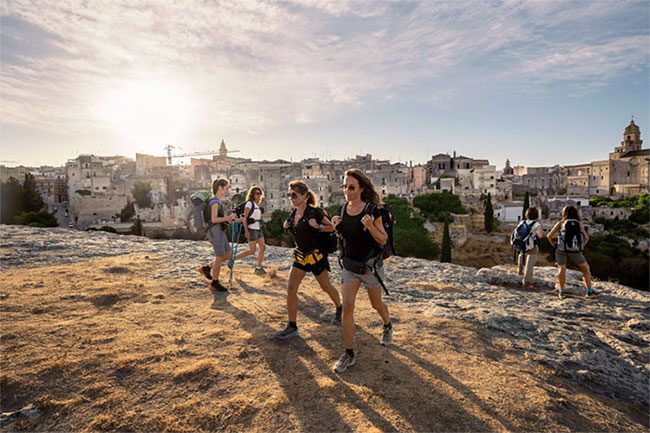
Gravina in Puglia, a southern Italian city experiencing a significant increase in tourism. (Photo: National Geographic).
The Appian Way is not just a road; it is a technical masterpiece, symbolizing the strength and prosperity of the Roman Empire at one time, while also serving as a treasure trove of culture and history that has endured through the centuries.
The legacy of the Appian Way tells a timeless story of adventure, ambition, and the enduring creative power of humanity. It stands as a testament to the ingenuity of ancient Romans and underscores the importance of transportation infrastructure in the development of civilization.


















































